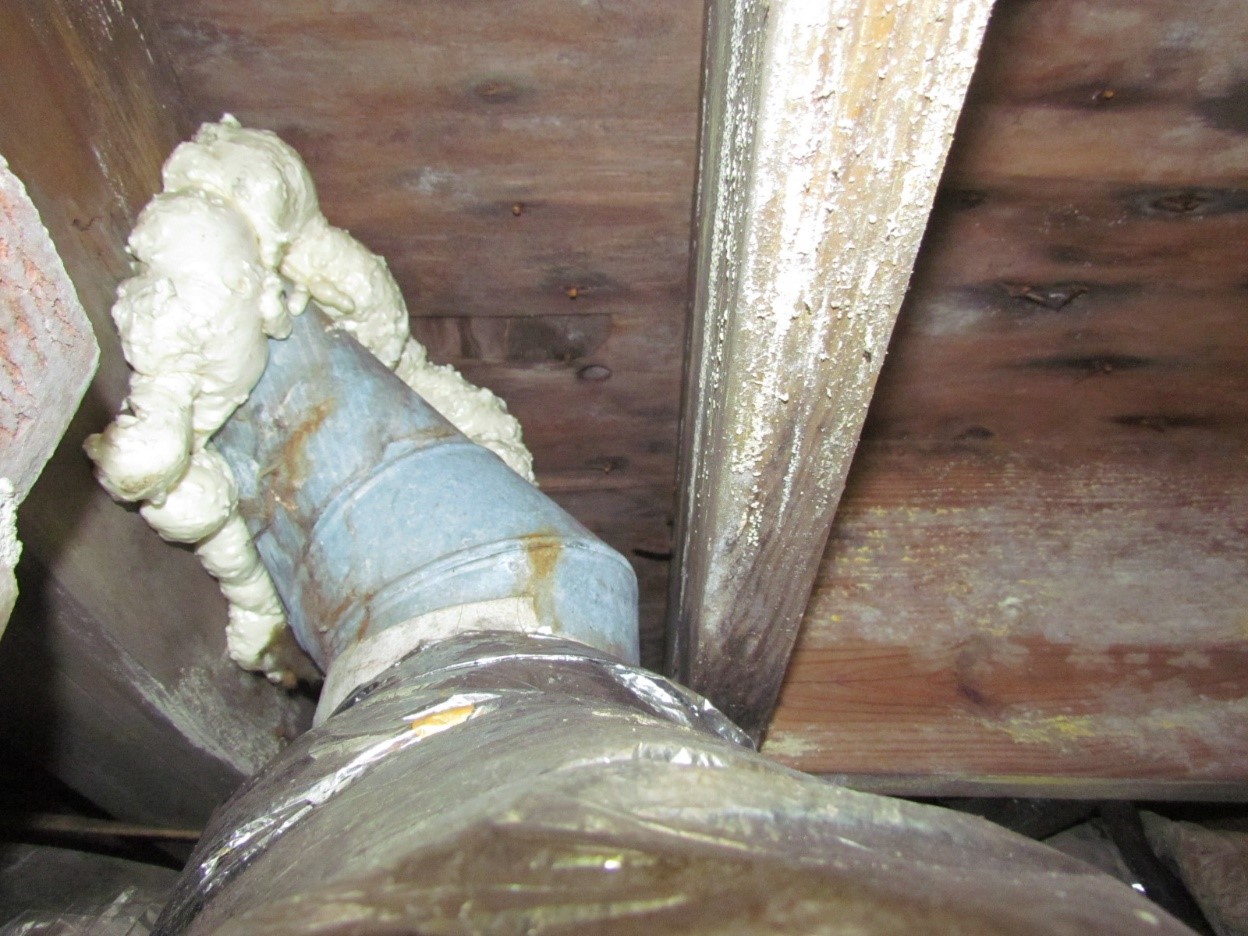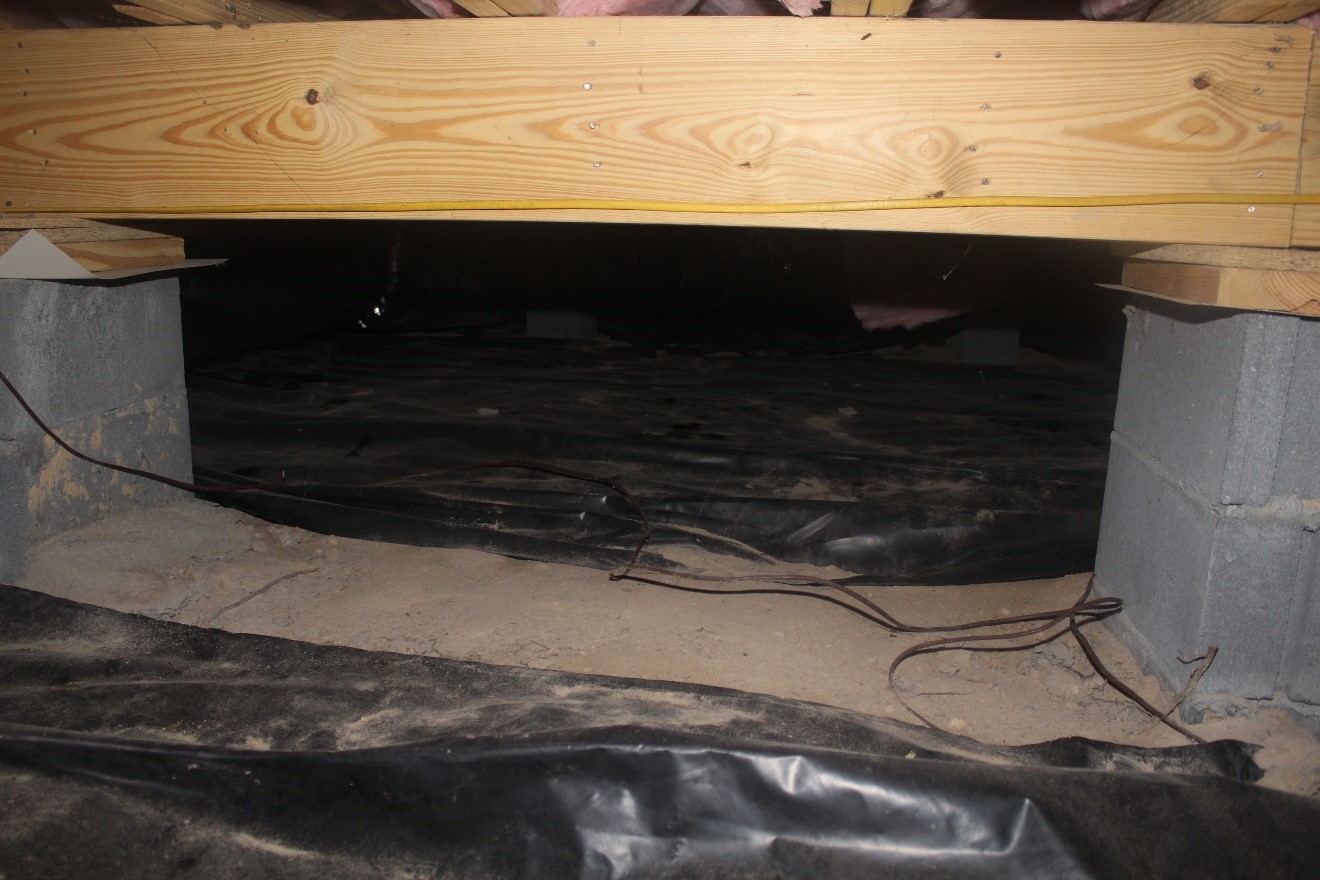Why Is the AC Vent Wet?
Have you ever walked around in your socks at home, stepped onto the air conditioning (AC) vent and your socks got wet? Have you ever noticed water dripping from a ceiling AC vent? You might say to yourself, my vents are leaking water; do I need to call the plumber?
Well, you probably do not need a plumber, but there is a condition that needs the attention of an air conditioning or other qualified contractor.
The water is not coming from the plumbing system, but rather it is condensing water-vapor that is present in warm-moist air which is finding its way into the air-conditioned space. Just like the outside of a cold beverage on a warm humid day, water vapor is condensing on the AC vent’s metal surface because the surface is cooler than the dew point temperature of the air. Condensing water vapor or condensate may result for several different reasons. One reason could be air is passing from the crawlspace or attic into the interior around the vent boot installation. In the photograph below, the vent boot was leaking and to try to stop the air leakage, foam has been applied to the back of the vent boot. The moisture in the infiltrating air condenses on the metal of the vent forming liquid water.
A second reason could be cooled air from the air conditioning system is leaking from the duct to vent connection, causing water vapor to condense by overcooling materials near the leak location. A third possibility is that the duct insulation has deteriorated, has been displaced, or the duct was never completely covered with insulation and the duct’s metal surface is exposed to the warm-moist air of the crawlspace or attic as seen in this photograph. The metal surface of the duct is sweating and impacting the surrounding wood.

Other potential causes include low refrigerant charge in the AC system, an old-dirty AC filter, a clogged drain, or other problems related to proper maintenance of the air conditioning or duct system or its installation.
Conditions in the crawlspace, in the attic or around the building can also be contributing factors to condensation developing on AC vents. The conditions include poor exterior drainage, inadequate roof drainage, a poor, deteriorated, or absent vapor barrier on the ground in the crawlspace (see photograph below where vapor barrier is missing between piers), or a lack of adequate ventilation in the space.

Left uncorrected, the condensing water can lead to staining and decay of wood flooring and subflooring, water damage and staining to ceiling and walls, biological growth on surfaces and interior furnishings, elevated indoor relative humidity, and a poor interior air quality.
Once a property owner becomes aware of such moisture-related problems, the corrections often include addressing several of the conditions identified above at once. Moisture migration generally takes place from the exterior to the interior, so it is preferable to prevent entry in the first place.
About the Author
D. Jeff Jaco III, M.E., P.E. is a Consulting Engineer in our Columbia, SC Office. Mr. Jaco offers consulting services in the following areas: accidents in commercial, industrial, and residential settings; mechanical equipment damage assessment and repair and replacement cost estimates; and project estimating and scheduling. Further, he performs engineering analysis and investigation of fire protection systems, boilers, plumbing, and piping systems, HVAC systems, and gas systems. You may contact him for your forensic engineering needs at djjaco@edtengineers.com or (803)791-8800.
Learn about how EDT Forensic Engineering & Consulting approaches vehicle damage assessments, origin of fire and forensic engineering by assigning a file today.

